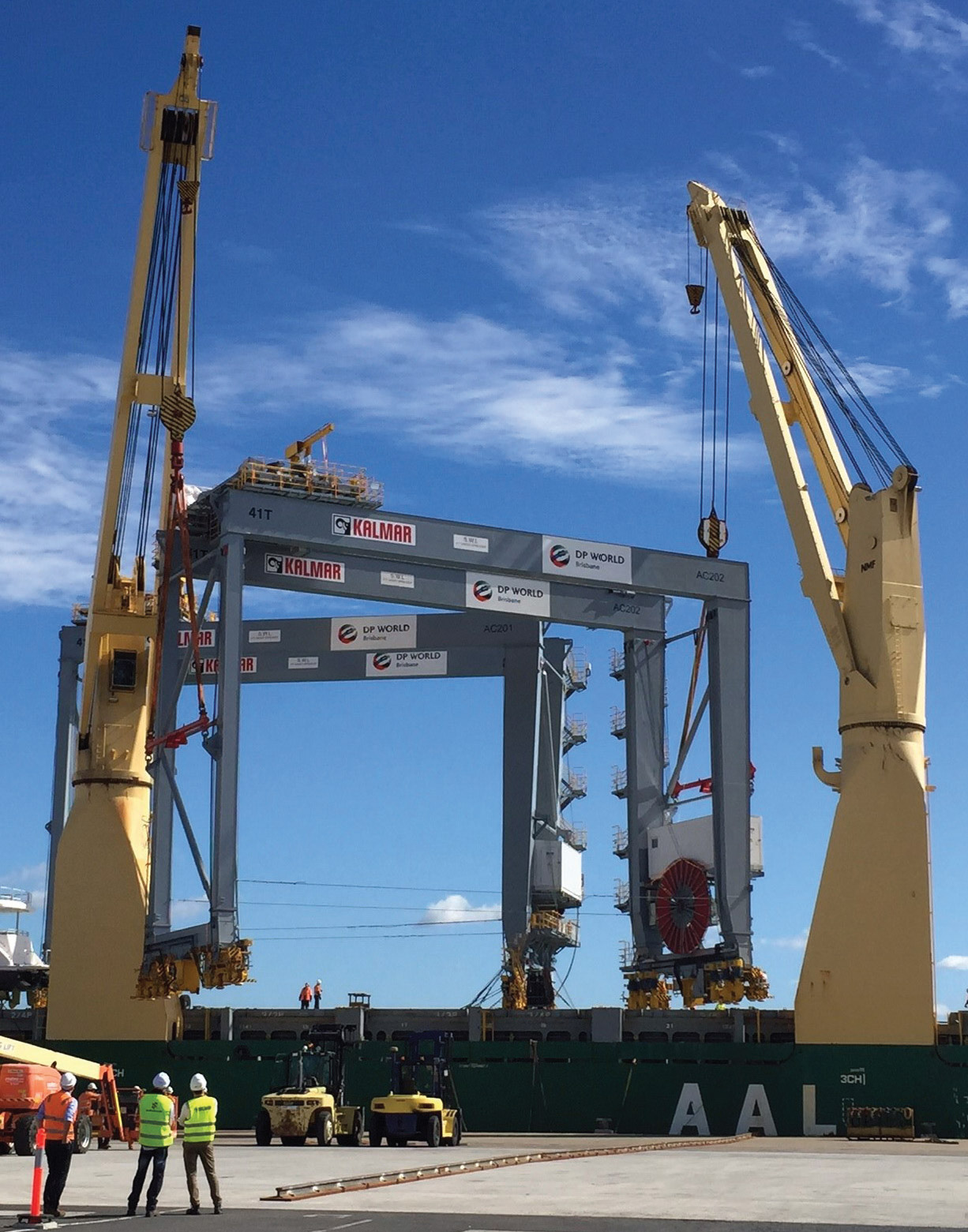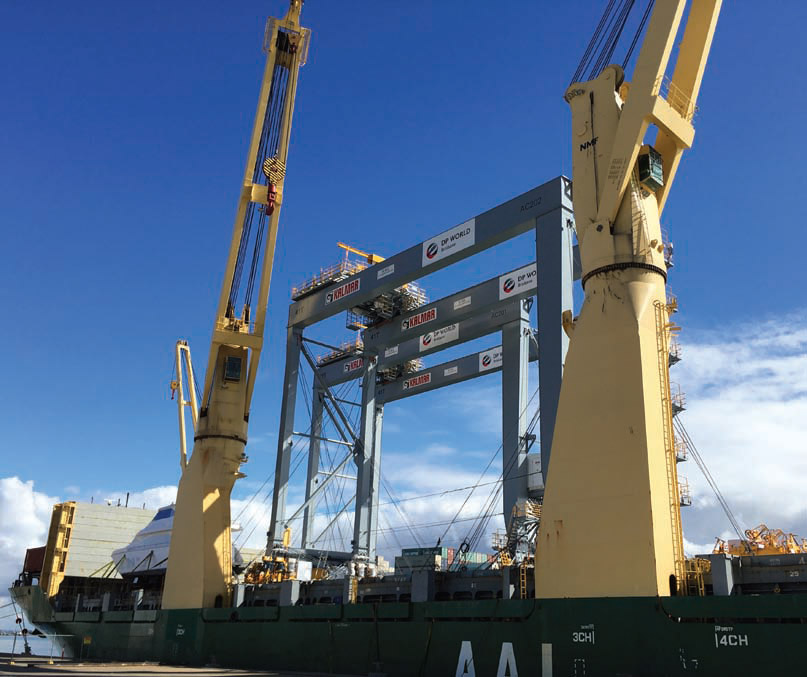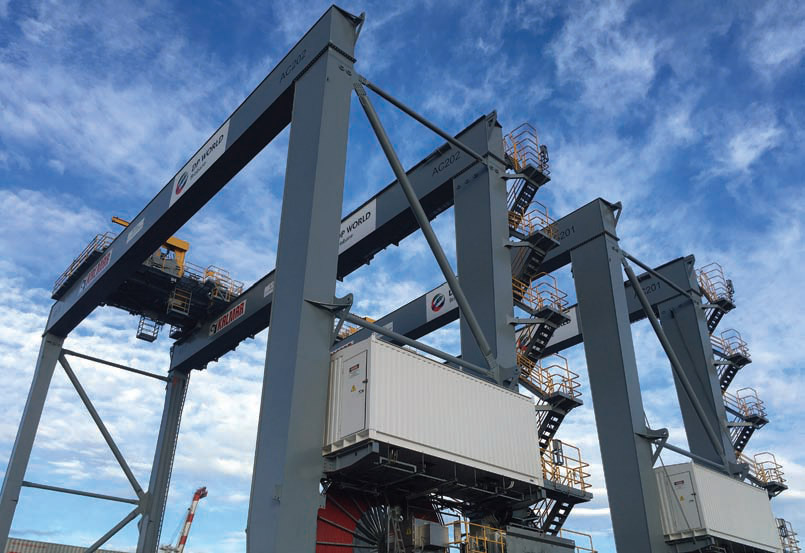Turnkey automation
7 November 2016Since signing a new 40-year lease at the Port of Brisbane, stevedore DP World Brisbane has invested AUD250m in automation. Key to this project have been a series of orders for Kalmar automated stacking cranes.
DP World Brisbane’s facilities are located on the mouth of the Brisbane River in Australia. The Port of Brisbane is the largest port in Queensland and presently the fastest growing port in the country. DP World Brisbane is a modern terminal offering a full range of electronic business support to clients, including electronic customs import release of cargo, electronic data interchange reporting and web based information services.
The competitive environment at the Port of Brisbane became tougher with the arrival of a third stevedore in 2012. Additionally, the other two stevedores at the port have also deployed automated systems and equipment, reforming the local competitive environment.
DP World Brisbane realised that it would have to make more effective and efficient use of terminal space while maintaining the highest standards of safety, and comply with maritime transport security regulations and customer service.
The company opted for a system in which containers are transferred by manned shuttle carriers from the quay crane to the interchange area at the waterside end of a module serviced by automated stacking cranes (ASCs). There will be seven operating modules each serviced by two ASCs. The overall annual capacity of the seven modules is around 900,000 TEU, providing DP World Brisbane with significant future development capability.
DP World Brisbane has adopted the latest automation technology from Kalmar and Navis to ensure fully integrated operations that deliver optimum productivity and reduce operational costs.
Fourteen Kalmar shuttle carriers operate between the ship-to-shore cranes and ASCs to transfer containers between vessels and the land.
Kalmar Automated Truck Handling automates the landside operations in the terminal. It uses laser sensors to measure the exact location of the truck trailer’s twistlocks and feeds the information to the crane, which automatically adjusts the position of the container for a perfect grounding of the container onto the trailer.
The combination of automated stacking cranes and shuttle carriers from Kalmar, integrated with Navis’s N4 terminal operating system, will offer DP World Brisbane excellent customer service as a result of higher waterside productivity, added stacking capacity, more consistent operational performance and additional pickup and delivery flexibility.
Safety and environmental aspects are further enhanced by fully automated, electrically powered operations, which reduce the emission levels to zero.
There has been a fundamental shift in how the facility operates and a reduction of some 50% of operational employees.
The project will increase DP World Brisbane’s terminal capacity from 600,000 to 900,000TEU and will be one of the most highly automated terminals in the world.
Delivered complete
Kalmar recently delivered two cranes for Phase 2 of the ASC project. The shipment carrying two new nine-wide ASCs arrived at DPW in project schedule and in perfect condition.
The two ASCs were transported fully-erected from China to Australia and unloaded in Brisbane in July.
“The arrival of the vessel carrying two fully-erected ASCs was really impressive. DP World and Kalmar staff alike were excited to watch as the vessel pulled into the port.
Kalmar would like to congratulate and thank everyone involved,” says Jyri Saarijoki, project director, Kalmar.
“The successful shipment of fully-erected cranes from China to Australia with efficient delivery onto the terminal is an important milestone for Kalmar and validates the method as an efficient and proven concept.”
The delivery of the two Kalmar ASCs marks the fourth successful fully erected ASC shipment from China to Australia. To date, Kalmar has provided DP World in Brisbane 16 Kalmar ASCs and 16 Kalmar shuttle carriers integrated with N4 TOS. The two new ASCs bring the number of modules servicing container trade to eight and increasing capacity by 14% to 720,000 TEU.


